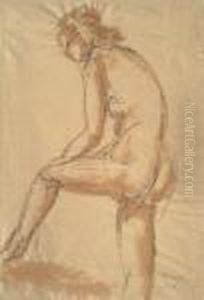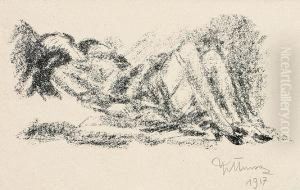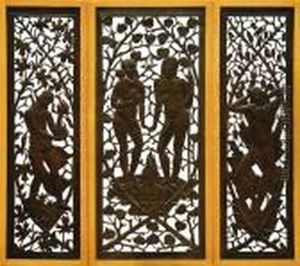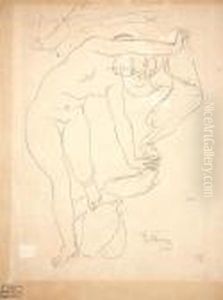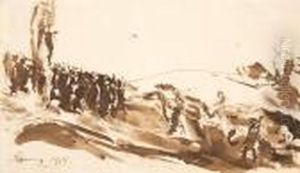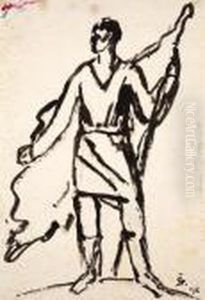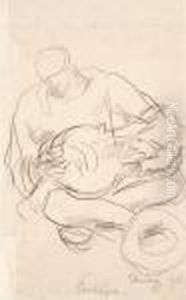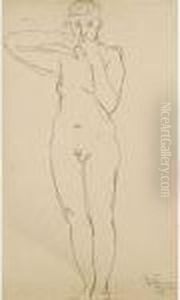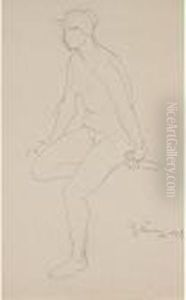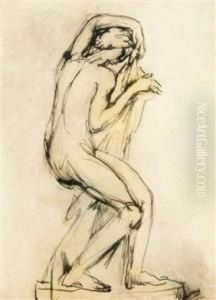Jan Stursa Paintings
Jan Štursa was one of the leading Czech sculptors associated with the early 20th-century modernist movement. Born on May 15, 1880, in Nové Město na Moravě, then part of the Austro-Hungarian Empire, Štursa's work would come to reflect the tumultuous changes of his time and the search for a modern Czech national identity.
Štursa initially trained at the Woodcarving School in his hometown before moving to Prague to study at the Academy of Fine Arts under the guidance of Josef Václav Myslbek, a prominent Czech sculptor known for his monumental works. During his studies, Štursa was influenced by both traditional academic styles and the burgeoning modernist trends that swept through Europe at the turn of the century.
After completing his education, Štursa's artistic style evolved from the ornate qualities of Art Nouveau to a more expressive and simplified form, which aligned with the developing modernist aesthetic. His sculptures often depicted human figures and were characterized by their emotive qualities and fluid lines. Štursa was particularly adept at capturing the human form in moments of introspection or emotional turmoil.
Štursa’s work began to gain recognition, and he participated in several important exhibitions, including the Manes Exhibition of 1914 in Prague, which was a significant event for Czech modern art. His work from around this period, such as 'Wounded' (1916) and 'The Death of the Rebel' (1918), reflects the impact of World War I and the complex feelings of despair and hope experienced by many during this era.
Despite his success, Štursa's life was marked by personal struggles, and he faced both financial difficulties and health problems. Tragically, his life was cut short when he committed suicide on April 2, 1925, in Prague. His death came at a time when he was increasingly recognized as a major figure in Czech sculpture, and his legacy has continued to influence subsequent generations of artists.
Štursa's contributions to Czech modernism were significant, and his works remain an integral part of Czech cultural heritage. They can be found in public spaces, galleries, and museums throughout the Czech Republic. His ability to convey the human experience through sculpture has ensured his lasting reputation as one of the key figures in Czech art history.
